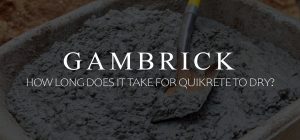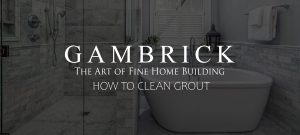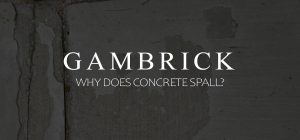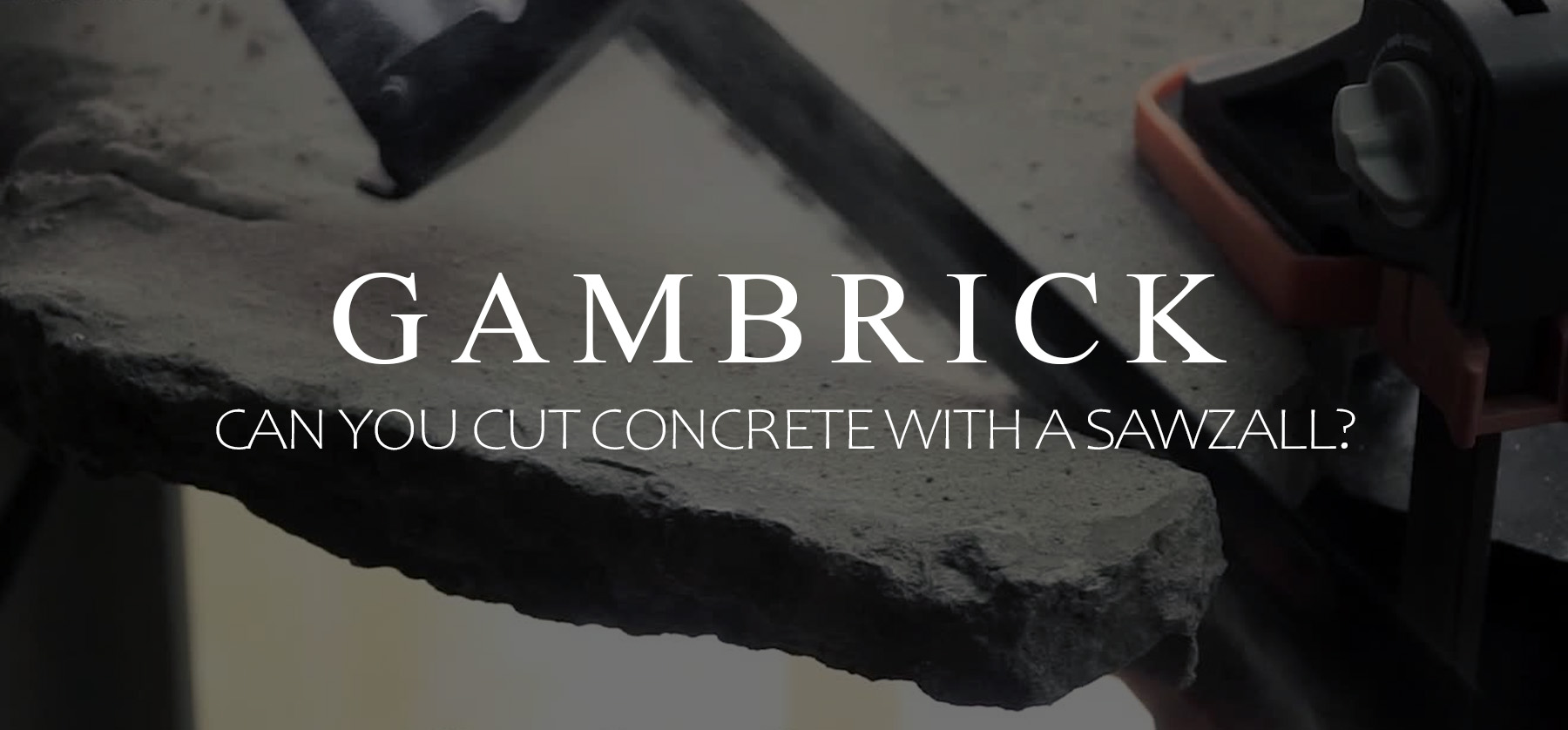
Can You Cut Concrete With A Sawzall?
Concrete is an extremely hard, dense material that’s very hard to cut without a really strong saw and a special blade. Especially if it’s a thick slab, solid concrete wall or footing. A heavy duty concrete saw with a large circular diamond blade and a water supply are what we use to cut through solid concrete. It wets the concrete as you cut it to reduce heat and dust. However, you can cut concrete with a Sawzall if it has the right blade.
Sawzall blades that can cut through concrete come in two forms, abrasive and toothed.
- Toothed concrete blades are very aggressive with a low teeth count, around 2 teeth per inch, and a carbide coating that’s tough enough to cut through solid concrete. The teeth have extra-wide spacing between the elongated teeth to prevent the blade from getting choked on dust and debris.
- Abrasive concrete blades grind through concrete with a tough diamond or carbide grit coating.
I’ve been a mason for over 25 years and can tell you firsthand how great sawzalls are for cutting through thin concrete walls, footings, and slabs. But I use traditional concrete saws with water and a round blade for thicker concrete.
Once my cuts are made, I break the concrete with a pickaxe or sledge hammer into smaller chunks which are easier to handle if I’m loading by hand. Otherwise large chunks are fine if I have a machine on site to move them.
When cutting concrete, stay away from metal, concrete blades aren’t designed to cut through it and can be damaged. A good indicator of metal in concrete are rust stains.
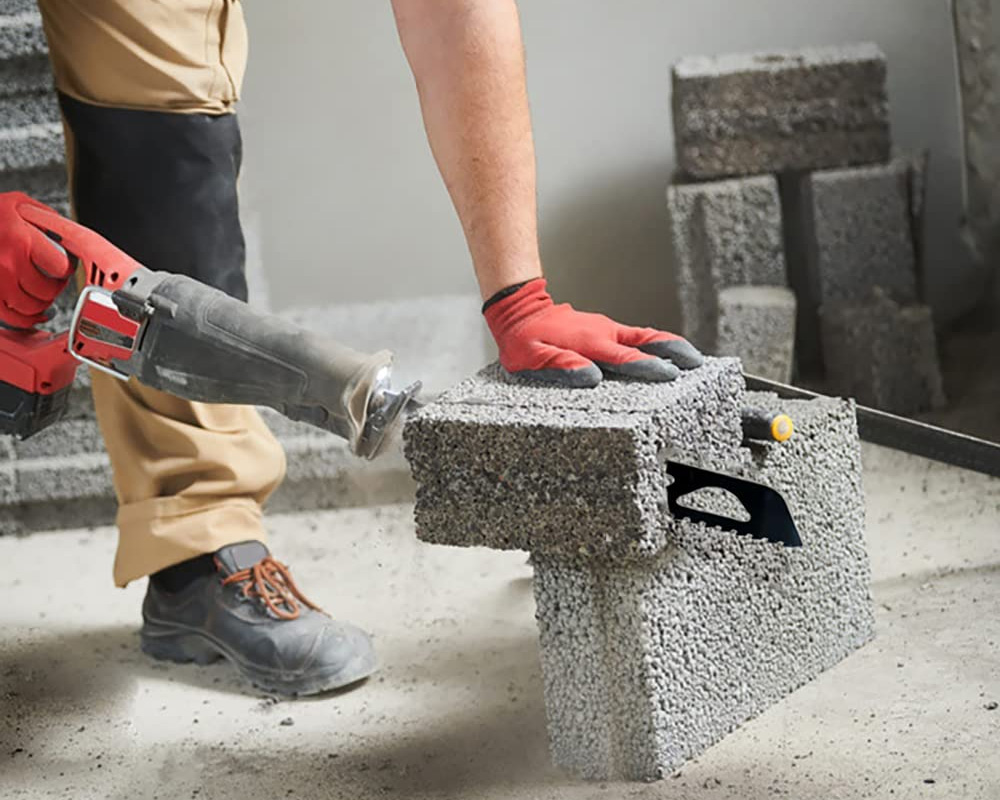
Click HERE to buy Carbide Tipped Concrete Sawzall Blades on Amazon
Which Sawzall Blade Is Best for Cutting Concrete?
Although it’s possible to cut through concrete with a reciprocating Sawzall and the right blade, other tools may be much better for the task. Angle grinders, circular saws and concrete saws are much more efficient for cutting concrete.
Having said that, there are some advantages to cutting concrete with a Sawzall. Angle grinders and circular saws use round diamond blades to cut through concrete. The deepest you can get with a standard blade is around 4 inches. But a Sawzall can cut through slabs much thicker because the blade is 9 to 12 inches.
The best Sawzall blade for cutting concrete is one with carbide teeth or grit. Because of the tough carbide coating, they can cut through dense concrete slabs and block. Start slow to prevent the saw from jumping around on you. This will help you cut an accurate and fine line. Once the blade gets into the concrete about 1/4″ you can use full power.
I recommend using a reciprocating Sawzall blade to cut concrete block or thin slabs. They work really well when the concrete is thinner and doesn’t have lots of stones. But for a thick wall or footing I’d use a concrete saw with a water supply.
Note: Lots of Sawzall blades use a carbide or diamond coating. Make sure you buy one that has a diamond or carbide coating and says for use on concrete.
If you’re demolishing a section of slab because it’s cracking, consider using a DIY concrete crack filler instead. The best option isn’t always removing a slab and pouring a new one. Crack fillers work really well, are easy to apply, and prevent cracks from getting worse.
Abrasive Grit Coatings
Abrasive grit coatings allow a reciprocal Sawzalls to grind and cut through concrete.
There are two basic types of mineral-grit blade coatings you can choose from: carbide and diamond.
- Diamond is one of the hardest substances on the planet. Diamond coatings are used on blades to cut all sorts of extremely dense materials like concrete, tile, stone and brick.
- Carbide is another extremely tough material that can help a blade cut through concrete.
You really can’t go wrong with either coating. They both work really well and will cut through a concrete slab when paired with a strong enough saw.
The term carbide actually refers to a compound called “tungsten carbide.” Although tungsten carbide blade coatings aren’t as hard and durable as a diamond coating, they’re much stronger than steel.
Reciprocating saw blade manufacturers label both diamond and carbide blades as “concrete cutting blades.”When you buy one, check the label to see what type of coating the blade has.
Diamond blades are usually more expensive than carbide blades but they tend to last longer and cut a little better. But they both work fine in my experience. I usually use the cheaper of the two because concrete blades are expensive.
Blade Size
Concrete Sawzall blades come in a variety of widths, lengths and thicknesses.
For a reciprocating blade to work they need to cut through the object your cutting. I always buy them at least 2 inches longer than what I’m cutting. This allows enough room for the blade to rock back and forth.
Long blades are usually more flexible than short blades and better for creating curved cuts.
The thickness of the blade matters when cutting concrete. It takes a lot of downward pressure because concrete is very dense, especially when cutting through a stone. Thick blades are stronger than thin narrow ones. Unless I’m cutting through a thin concrete slab with few stones, I always buy the thickest blade I can.
Sawzall Is A Brand Name For A Reciprocating Saw
Some people refer to all reciprocating saws as Sawzalls, but the name ‘Sawzall’ is a trademarked name by the Milwaukee company. Lots of tool companies like Dewalt, Porter Cable and Makita also make a reciprocating saw.
The Milwaukee company has also become famous for its wide range of Sawzall blades. This has led people to use the term Sawzall blade to refer to all reciprocating blades.But lots of other companies like Dewalt and Irwin and Lenox also make reciprocating saw blades.
No matter what type of reciprocating Sawzall you use or who made the blade, they’ll all cut through concrete as long as you use the right type of blade. It should be diamond or carbide coated, grit or toothed.
Buying The Right Blade
When you shop for the right reciprocating Sawzall blade for cutting concrete, look for the following:
- Length: The blade needs to be long enough to cut through the concrete you’re cutting. Reciprocating saws work by rocking the blade back and forth against the material. So the blade needs to pass all the way through the concrete from one end to the other. You can’t cut half way into the concrete like you can with a grinder blade. Make sure you buy a blade long enough to make the cut.
- Masonry: Check the label to make sure your blade is for cutting masonry block or concrete. Masonry blades have a tough coating like carbide or diamond and are generally thicker.
- Coating: Look for either a carbide or diamond coating. Concrete will grind down the teeth of a standard blade fairly quick.
- Thickness: I buy as thick of a blade as possible. More thickness provides additional support so you can press hard against the concrete without bending the blade.
- Price: Masonry blades are expensive because of their coating material. Shop around and find a deal or buy in bulk for a discount.
The brand reciprocating Sawzall you have doesn’t matter that much, although some are much stronger than others. It all comes down to the blade. A Sawzall can cut through concrete, but you have to use the correct blade. Without it, no matter how good the saw is you won’t be able to cut into the concrete.
What’s The Best Tool For Cutting Concrete?
The best tool for cutting concrete is a concrete saw with a diamond blade and a water hookup or a concrete chainsaw. The diamond coating grinds and cuts the concrete as the blade spins. The water supply wets the concrete as you cut to reduce heat and dust. The combination of a strong saw, diamond blade and water cuts through concrete with ease.
The blades for concrete saws are much larger than what you’d use in a circular saw or grinder. This allows you to penetrate much deeper into the concrete. I’ve seen them as large as 36 inch in diameter which creates a 15 inch deep cut.
Large concrete saws and diamond blades are very expensive and meant for professional use. Just a single 36 inch blade can cost over $1,000. But you can rent them at Home Depot which is a huge benefit if you only need to cut concrete once or twice.
If your concrete isn’t that thick, use a standard circular saw or angle grinder with a diamond wheel blade. They work similarly to a concrete saw only they’re smaller and don’t have a water connection.
Concrete can be cut either wet or dry.
- Dry cutting creates heat and a lot of dust but it works fine for thinner concrete slabs.
- Wet cutting cuts down on dust and heat which is great for yourself, your tool and the blade.
If you want to try wet cutting, make sure to have a hose or spray bottle with you when you start cutting. Wet the blade and concrete as you cut but not the saw.
Dry cutting concrete works fine, but it isn’t as effective as wet cutting. It creates a lot of heat and dust. I’ve seen concrete blades turn red hot going through a concrete slab. This can quickly burn out a blade rendering it useless.
I’ll discuss more about concrete saws and concrete chainsaws later in the article.
How To Cut Concrete
Cutting concrete isn’t that hard if you have the right blade and a power tool. Use a circular diamond blade or reciprocating blade with some carbide or diamond grit. Always wear protective gear like goggles, gloves and a mask. If you’re dry cutting, have a plan to deal with all the dust. Before starting cutting, mark the area you’ll be cutting with a marker. Consider using water to wet the concrete and your blade. This will control dust and heat.
Cutting concrete can be a tough job but you can do it if you have the right tool and blade. The thicker and more stones there are in the slab, the harder the cut will be.
Here are some tips on how to cut concrete:
- Tools: A circular diamond blade is best for cutting concrete but reciprocating Sawzall blades with a diamond or carbide grit work too.
- Preparation: Make sure to have a plan for all the dust. Shut windows and cover doors because it will get everywhere. or use water.
- Mark The Concrete: Before you start cutting, use a marker to mark the line you’ll be cutting.
- Safety: Wear protective gear like goggles, a mask and gloves.
- Water: I almost always use water when I cut concrete unless the slab is very thin or doesn’t have stones. Wet the concrete and your blade as you cut. Don’t wet the saw.
- Take Breaks: If you’re dry cutting, make cuts slowly. Plunge the blade in, make a shallow cut and then back out to let the blade cool. Blow into the cut to remove dust. Then cut again. This is called intermittent cutting.
Take your time when cutting a concrete slab and make sure you stay on your line. It’s not easy to make a correction once you start cutting.
Is It Easy To Cut Concrete?
Cutting concrete isn’t that hard if you have the right tools and blade. However, the difficulty gets higher as the slab gets thicker.
Reciprocating Sawzall blades will cut through thin slabs and cinder block with relative ease. But it’s tough to get through solid dense concrete with lots of stones. Thick slabs are even hard to cut with a concrete saw.
The thicker the slab the bigger the saw you’ll need. large concrete saws with a 36″ blade are heavy and hard to handle. It’s not the easiest job, but the saw does all the work. With a new blade a concrete saw will cut through just about any slab in minutes.
Water helps a lot. Dry cutting concrete kicks up a lot of dust. And it’s very easy to burn out a blade. I almost always use water when I cut concrete unless it’s an inside job.
If you don;t want to use water, have a shop vacuum on hand. Have a helper place the vacuum right next to the cut. It will suck up a lot of the dust as you cut. This can help a lot with dust control.
Is A Reciprocating Sawzall Good For Cutting Concrete?
A reciprocating Sawzall is good for cutting concrete if you have the right blade, but it works best on thinner slabs or cinder block. It’s all about the blade.
Buy a blade as long as possible and with a diamond or carbide grit. Go slow at first until the cut gets started. This will stop the blade from jumping off your mark. Once the blade is in about 1/4″ you can use full power. The cut will help keep the blade on line as you work.
Although a reciprocating Sawzall will cut a concrete slab, it doesn’t work as well as a grinder, concrete or circular saw with a diamond blade. But they have their benefits. The blades come 9″ and 12″ which is better in a lot of cases than a grinder or circular saw. I like them a lot for cutting thin slabs and block. But for cutting thick slabs, walls and footings or dense concrete with lots of stones, I use a concrete saw with a water hookup.
A reciprocating saw works by rocking the blade back and forth against the concrete. Whereas a grinder, concrete or circular saw works by spinning the blade. Because of this, the circular saw works better but to get deep the blade has to be huge.
For example, a 12″ Sawzall blade can cut through 10 inches of concrete, but to cut that deep with a circular saw blade it has to be 24″ in diameter. No grinder or circular saw can handle a blade that large so you’re only option is a large concrete saw.
For the money, a reciprocating Sawzall is the cheapest way to cut concrete. Concrete saw blades can cost over $500, but you can buy a concrete Sawzall blade for around $10 bucks.

Click HERE to buy a Concrete Chainsaw on Amazon
Can You Cut Concrete With A Chainsaw?
You can cut concrete with a concrete chainsaw. They work pretty much the same as a standard chainsaw only they have a special diamond tipped blade. Most also have a water supply that wets the blade and concrete as you cut.
Concrete chainsaws are my favorite way to cut concrete. They work a lot of like reciprocating Sawzall only much bigger and more powerful. They’re great for making deep cuts that other concrete saws can’t make.
They can also make narrow plunge cuts right through a concrete will which is something no other concrete saw can do. This great if you have to cut a square box or other shape out of a concrete wall. They’re really something every mason should have on the truck just in case.
Concrete chainsaws are just like any other concrete saw. It’s about the blade and the power of the saw. I prefer a gas chainsaw over electric. With a fresh blade, they can cut through pretty much any concrete slab, wall, footing or pier.
The concrete chainsaw I use is made by ICS. It’s gas powered and has a water supply. But there are a variety of concrete saws available on Amazon. They come in both electric and gas. Most don’t come with a blade so make sure to buy one separately.

Click Here to buy a Concrete Saw on Amazon
What’s a Concrete Saw?
Concrete saws spin a large round diamond tipped blade that easily cuts through concrete. With a fresh blade they cut through dense concrete with ease. And they generally have a water hookup which cuts down and heat and dust.
The only drawback to a concrete saw is that huge blade. They’re heavy and a bit awkward to use but they work extremely well. A 16″ blade can easily cut 8″ deep into a concrete slab, wall or footing.
This is another concrete cutting tool that a mason should have on the job just in case. In some situations these are better than a concrete chainsaw. Which is better for cutting concrete depends on the job and what you’re trying to cut.
For plunge cutting blocks or shapes out of a concrete wall the chainsaw is best. However, if you’re cutting a straight line in a slab, I prefer the concrete saw. They make very accurate and straight cuts.
Like concrete chainsaws, concrete saw blades are generally sold separately.
Concrete saws are typically cheaper than concrete chainsaws. And you can rent them. I own a concrete chainsaw and some concrete blades for my Sawzall and I rent the concrete saw when I need it.
Summary: Can You Cut Concrete With A Sawzall?
Concrete is an extremely hard, dense material that’s very hard to cut without a really strong saw and a special blade. Especially if it’s a thick slab, solid concrete wall or footing. A heavy duty concrete saw with a large circular diamond blade and a water supply are what we use to cut through solid concrete. It wets the concrete as you cut it to reduce heat and dust. However, you can cut concrete with a Sawzall if it has the right blade.
Sawzall blades that can cut through concrete come in two forms, abrasive and toothed.
- Toothed concrete blades are very aggressive with a low teeth count, around 2 teeth per inch, and a carbide coating that’s tough enough to cut through solid concrete. The teeth have extra-wide spacing between the elongated teeth to prevent the blade from getting choked on dust and debris.
- Abrasive concrete blades grind through concrete with a tough diamond or carbide grit coating.
I’ve been a mason for over 25 years and can tell you firsthand how great sawzalls are for cutting through thin concrete walls, footings, and slabs. But I use traditional concrete saws with water and a round blade for thicker concrete.
Once my cuts are made, I break the concrete with a pickaxe or sledge hammer into smaller chunks which are easier to handle if I’m loading by hand. Otherwise large chunks are fine if I have a machine on site to move them.
When cutting concrete, stay away from metal, concrete blades aren’t designed to cut through it and can be damaged. A good indicator of metal in concrete are rust stains.
If you have any questions about cutting concrete, email or leave a comment below.

John Mazzuca | About | More Posts |
Custom Home Builder
John Mazzuca is a custom home designer and builder at Gambrick with over 25 years experience in the construction industry. John has designed, built and/or remodeled hundreds of homes, small buildings, and commercial projects. He writes about business, real estate, home building, and household electronics. His work has been featured in Fox Business, Better Homes & Garden, House Beautiful, and more.










